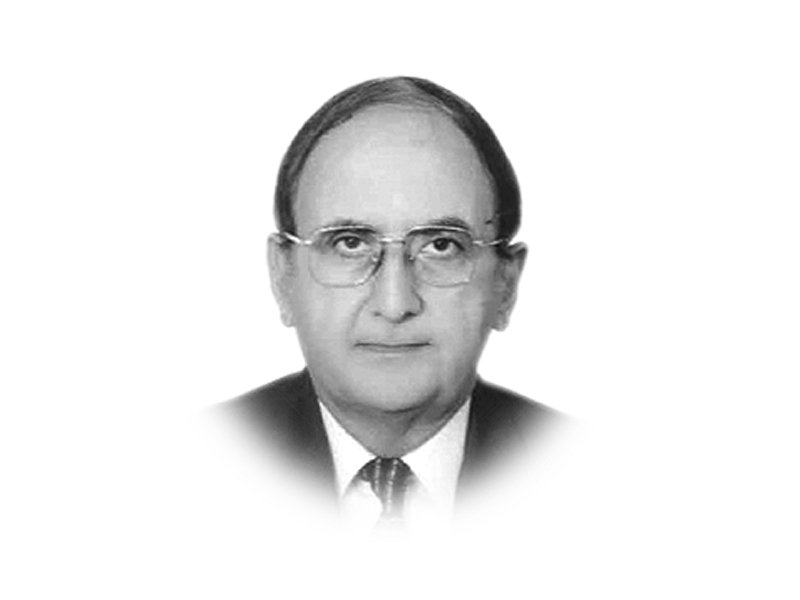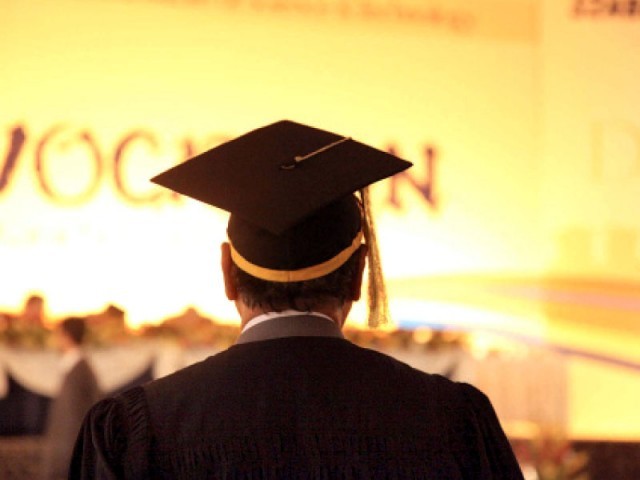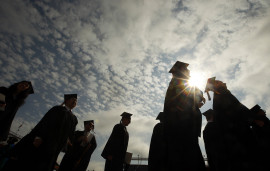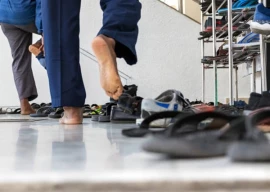
The failed attempt to kill an important MQM leader in Karachi on Eid, September 2, 2017, attracted much media attention partly because the planners and attackers had a university-academic background. This was not the first time that educated youths with a university background were found to be associated with radical Islamic movements. In the past, the educated young people in the fields of medicine, hard sciences, engineering, IT, commerce and business studies were found to be associated with radical Islamic groups.
This does not necessarily mean that the regular seats of higher learning have become hotbeds of Islamic radicalism and extremism. However, it is important to understand what has changed there and how should we address this issue.
The students or former students of universities who get actively involved with militant radical Islamic groups constitute less than one per cent of the population of these institutions. Invariably, these students belong to hard sciences, business-related fields, medicine, engineering and IT because these students are not educated in social conflict management. Therefore, when they cannot ‘explain or understand’ socioeconomic inequities, ethnic and other conflicts and religious-sectarianism, they become vulnerable to puritanical religious appeals; other countervailing ideologies or their advocates are no longer available. The students from pure social sciences where they study society, human beings and their problems, are less likely to be directly involved in such violent and extreme activities; their number is very small.
Universities and colleges are a part of the society that has been transformed under the official policy going back to the General Ziaul Haq’s rule, and on its own into a more religiously conservative and appreciative of religious orthodoxy and militancy. The notions of religious activism, if not vigilantism, and militancy enjoy sympathy and support in the society because the young people have been socialised into these values through high school education and other policies of the government in the 1980s and 1990s. Some courses at the school level were revised in 2005-06 to partly reverse the trends toward religious orthodoxy and appreciation for militancy. However, this effort, and similar subsequent efforts, faced resistance from the political far-right and Islamists who describe it a negation of ‘Pakistan ideology’.
When the Taliban ruled Afghanistan (1996-2001), several Pakistani madrassas sent their students to the Jihad mission in Afghanistan to support the Taliban fight against their adversaries, and especially what was then known as the Northern Alliance. On their return, these students would impress their friends by narrating their ‘deeds’ there and encouraged them to go. Their impact spilled over into the society, impacting some non-madrassa youths.
By the end of the first decade of the 21st century, two generations in Pakistan had been socialised into orthodoxy and militancy. The universities could not escape this transformation both among young faculty and students. The impact was more profound where the student wings of Islamic parties were strong. These Islamic groups promoted militant thinking and shielded militant activists in universities. The Kashmir-focused militant groups had more opportunity to be active in association with the student wings of Islamic parties.
The idiom of academic discourse both by faculty and students got heavily oriented to religious orthodoxy and public display of religiousness became a popular practice. This also impacted research, analysis and interpretation of domestic societal issues and international politics in social and behavioural sciences. This practice became widespread after September 2001, when many among students and faculty shared the Taliban view of American attack on Afghanistan, war on terrorism and Pakistan’s decision to join the US-led global effort to end terrorism. A good number of theses submitted in social and behavioural sciences since the late 1990s opened the ‘Acknowledgment’ section with thanks to Almighty Allah enabled the students to write the thesis. There is nothing wrong with this acknowledgment but you would hardly find this in the theses submitted until the early 1980s. All this showed the changed social and academic environment in universities.
Religious orthodoxy and some support or sympathy for militancy as a strategy is to be distinguished from formal association with a radical group that uses violence as a strategy. In universities, the former trend is widespread. The latter tendency is exceptional. More research will have to be done to know if the students who get actively involved with terrorist groups are socialised into it on campus or is it the product of their life outside campus?
The universities play two additional roles to nurture pro-religiously conservative mindset and militancy. A university is an ‘ocean’ of young people where radical Islamic activists can find safe shelter either through their personal friends or student affiliates of Islamic parties.
Further, the number of state universities has increased over the last 12 years and the Higher Education Commission has encouraged universities to expand their academic programmes. The emphasis is on new courses, duplication of existing courses and increase in the number of students in courses. The state universities have been turned into ‘factories’ for dishing out MPhil and PhD degrees with little regard to quality. Therefore, it is possible for all kinds of young and middle-aged people to get into one academic programme or another; if not in the morning session which is very competitive, admission may be secured in the midday or evening or weekend courses. This has made the universities more vulnerable to non-academic and politicised pressures.
The growing religious orthodoxy and extremism or, in some cases, religious radicalism, cannot be addressed by sharing student data with intelligence agencies or by asking them to get a character certificate from the police. These are non-starters. There is a need to rationalise the courses, academic programmes and the number of students on campus. Teach the notion of citizenship, primacy of the nation-state of Pakistan and obligations towards others and the society. All these concepts have lost salience in academic parlance. The universities are a part of the society that has changed slowly towards religious orthodoxy. The reversal of these trends will also be a slow process, if any government pursues this as a priority.
Published in The Express Tribune, September 14th, 2017.
Like Opinion & Editorial on Facebook, follow @ETOpEd on Twitter to receive all updates on all our daily pieces.


































































COMMENTS (2)
Comments are moderated and generally will be posted if they are on-topic and not abusive.
For more information, please see our Comments FAQ